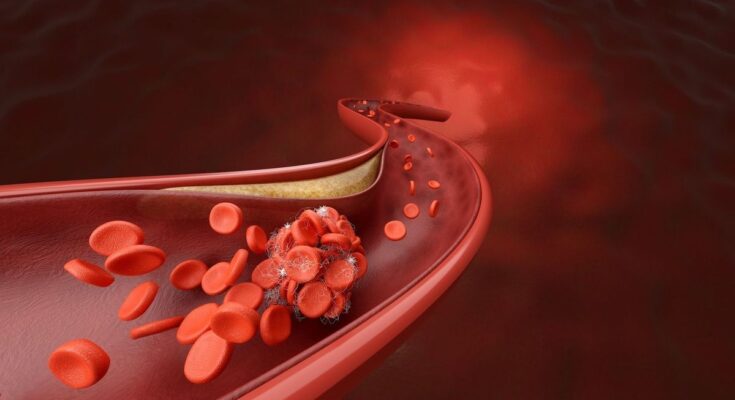Responsible for transporting blood and nutrients, the arteries play a fundamental role in the proper functioning of our body. What are the main arteries? What pathologies can affect them? How to take care of our arteries? Explanations from Dr François Diévart, cardiologist in Dunkirk.
What is an artery?
The main vessels of the human body, the arteries function as a sort of highway system responsible for transporting blood saturated with oxygen and nutrients (sugar, potassium, etc.) from the heart to all organs and tissues, from the toes to the top. of the head.
There are three types of arteries:
- Elastic arteries have the largest diameter;
- Muscular arteries composed of muscle fibers allow good contraction and expansion;
- Arterioles correspond to the smallest branches of the arteries, the capillaries. Their diameter is less than 0.3 mm.
Each artery is made up of three distinct layers:
- The inner layer corresponds to the intima composed essentially of collagen;
- The intermediate layer, the media, is composed of muscle fibers and elastin;
- The outer layer, the adventitia, protects the blood vessels. It is irrigated by very small blood vessels, the vasa-vasorum.
Thanks to their elastic fibers, the arteries can dilate, contract and support a certain blood pressure.
What are the main arteries?
Although it is impossible to list all the arteries of the human body, let us cite the main ones. “The large main arteries divide into secondary arteries which then subdivide into small branches, a bit like the structure of the branches of a tree. explains Dr François Diévart, cardiologist in Dunkirk. Once they have consumed their nutrients, the organs will produce carbon dioxide and waste which will re-enter the venous system, return to the heart, then to the lungs to be enriched again with oxygen, before beginning a new circuit.
The main arteries arise from the aorta. “The aorta carries blood from the left chambers of the heart to the rest of the body. It represents the main artery of the human body. specifies Dr François Diévart. Made up of a diameter of 2.5 cm, it is both the longest and thickest artery. We distinguish the thoracic aorta and the abdominal aorta.
Both coronary arteries surround the heart on its entire external surface. “The heart is not nourished by the blood which circulates inside it, but by arteries which irrigate it from the outside, like all the other organs.continues the doctor.
At the neck level, the carotid and vertebral arteries irrigate the head and the brain.
A little further down, the subclavian, axillary and humeral arteries irrigate the arms.
The median sacral artery (or middle sacral artery) is a terminal branch of the abdominal aorta. It continues in the basin.
The arteries of the digestive tract include arteries supplying the liver, intestines (mesenteric arteries), stomach and pancreas.
THE renal arteries arise from the abdominal aorta and irrigate the kidneys.
THE iliac arteries irrigate the legs.
The femoral artery is the main artery of the lower limb which follows the external iliac artery, below the inguinal ligament. We distinguish the common femoral artery, the deep femoral artery and the superficial femoral artery.
At the knee, the femoral artery becomes the popliteal artery which is then subdivided into 3 axes: posterior tibial artery, anterior tibial artery and peroneal artery.
What are the pathologies of the artery?
Atherosclerosis or arterial stenosis
The main pathology of the artery is linked to the accumulation of deposits (atheromatous plaques) which will reduce blood flow, and gradually block the artery. We speak of arterial stenosis or atherosclerosis. “We can take the image of a sink pipe in which impurities would hinder proper functioning., illustrates the cardiologist. Anyone can have atherosclerotic plaques. Different factors are involved: age but also other variables such as smoking, sedentary lifestyle, being overweight, hypertension, diabetes and other metabolic factors such as cholesterol. All these toxins will gradually generate fibrosis and limescale (linked to the calcification of calcium deposits) within the artery. Furthermore, the role of stress must not be neglected, as an emotional shock can promote the rupture of an atherosclerotic plaque. In addition, the accumulation of several risk factors has a multiplier and not an additional effect. “Prevention therefore plays a very important role because once the problems are there, treatment is more complex and often requires intervention from inside the arteries or by surgery. explains Dr François Diévart.
What is atherosclerosis?
In itself, an artery is not painful, but when it narrows or becomes blocked, the reduction or cessation of blood flow affects the downstream organ that it irrigates. “It is the damage to this organ which is painful as in angina, myocardial infarction or arteritis or which leads to rapid consequences with loss of functions of a part of the body as in stroke. . The problem is that of the affected downstream organ, but the cause is in the upstream artery. explains the specialist.
Certain arteries are more likely than others to be affected by atheroma. In young people, high cholesterol levels promote the occurrence of atherosclerotic plaques in the coronary arteries. “In middle age, high blood pressure can more easily affect the carotids, while the damage from smoking will be more often observed in the arteries of the lower limbs (arteritis). explains the cardiologist. Conversely, the subclavian arteries are rarely affected by this problem, and those of the arms are exceptionally affected, without our understanding the reason. However, as each artery is part of an overall, interdependent vascular system, the management of localized arterial narrowing will have implications for the overall functioning of the body. “A treatment administered for a specific condition will therefore have repercussions on the general state of health”continues the doctor.
Bypass or angioplasty
A long-term process, the narrowing of the artery takes many years before the damage appears in adulthood, generally around the age of 45-50. Pain can occur during exercise: chest pain called angina or angina pectoris for damage to the coronary arteries, or in the legs for arteritis (intermittent claudication).
Once diagnosed, treatment depends on the situation. “When an artery is suddenly blocked, as in a heart attack or stroke, treatment must be as rapid as possible to unblock the artery and allow the organ, the heart or the brain, to recover. be irrigated again, or at least ensure that the oxygen deprivation is as short as possible”explains the cardiologist.
In the presence of a narrowing of the artery (or stenosis), the treatment depends on the importance of the narrowing and the impact it has on the downstream organ, such as angina or difficulty walking. A therapeutic possibility then consists of performing a bypass, that is to say a diversion of blood circulation using a healthy artery or a vein, or even a prosthesis for the treatment of arterial problems. legs to improve oxygenation. The other possibility is to opt for a dilation technique, angioplasty. This medical technique consists of introducing and inflating a small balloon inside the artery in order to dilate it. “In order for the result to be maintained over time, a sort of metal support called a “stent” and often incorrectly called a “spring” is inserted into the artery.specifies the cardiologist.
Finally, specifically used for the narrowing of the carotid arteries and the femoral artery, a Thromboendariectomy (TEA) consists of a deep cleaning of the clogged artery by surgery.
After a first heart attack, the risks of recurrence remain high if the risk factors causing clogging of the arteries are still present. On the other hand, as soon as health and diet rules are put in place (stopping smoking, balanced diet, physical activity, management of hypertension and cholesterol), the risks decrease.
Aortic aneurysm
An aneurysm is an abnormal distension of the artery. Beyond a certain stage, there is a risk of arterial rupture. “More specifically, abdominal aortic aneurysm affects male smokers over the age of 60.notes the cardiologist.
Thoracic aortic aneurysm is often linked to a genetic abnormality, such as Marfan syndrome, for example. It can also occur during pregnancy or following trauma. “There are some treatments to slow the progression of the disease but, most often, treatment requires surgical intervention. continues the doctor.
Aortic dissection
More rarely, a dissection of the aorta represents a life-threatening emergency. Associated with high blood pressure, it is a complication of arterial dysplasia, that is to say…




